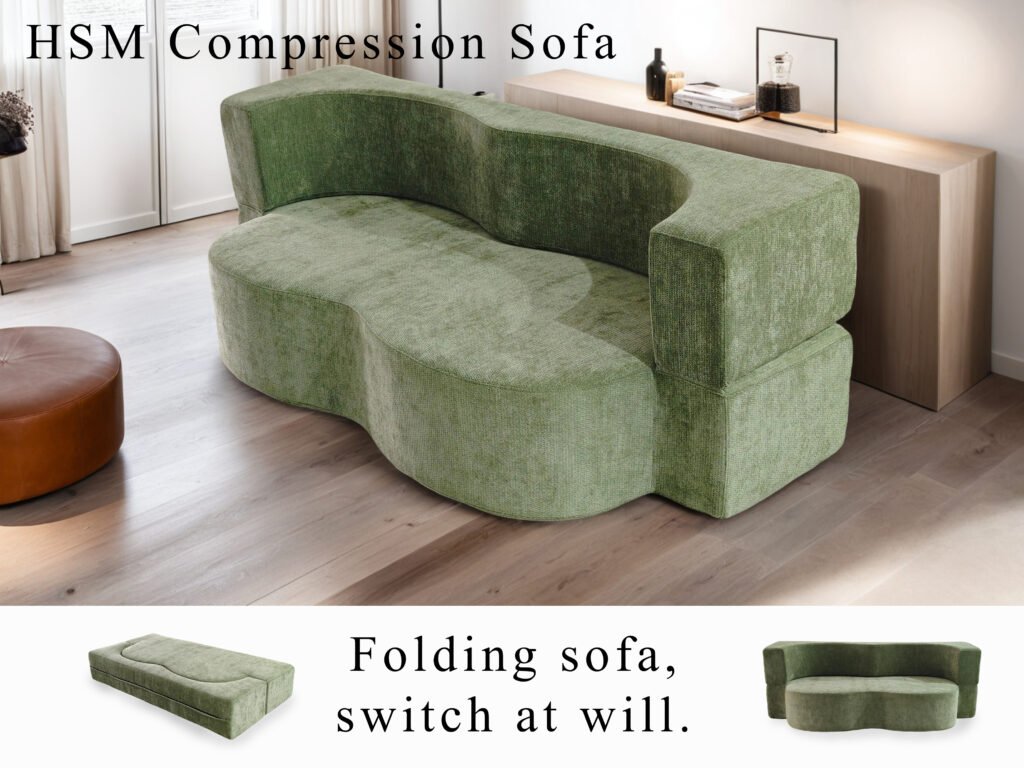Introduction
For B2B stakeholders in the furniture industry—manufacturers, wholesalers, distributors, and e-commerce platforms—understanding the differences in compress sofa sizes is crucial for product development, inventory planning, and meeting diverse market needs. Just as liquor bottles come in a variety of volumes to serve different purposes, compress sofas are available in a range of sizes, each designed for specific applications, customer segments, and logistical considerations. This guide explores the most common compress sofa sizes, their business significance, and the factors that influence size selection in today’s competitive marketplace.
Why Compress Sofa Size Matters in B2B
Choosing the right compress sofa size impacts everything from shipping efficiency and storage optimization to end-user satisfaction and project profitability. For B2B clients, the ability to offer multiple sizes allows for better alignment with project requirements—whether furnishing compact apartments, large hospitality venues, or flexible office spaces. Understanding the full spectrum of available sizes empowers buyers and suppliers to make informed sourcing and stocking decisions.


Common Compress Sofa Sizes and Their Applications
Compress sofas are typically categorized by seating capacity and overall dimensions. Here are some of the most prevalent sizes in the market:
| Sofa Type | Approximate Length | Typical Depth | Common B2B Applications |
|---|---|---|---|
| Mini/Single Compress Sofa | 30–50 in | 30–36 in | Dorms, micro-apartments, hospitality suites |
| Loveseat (2-Seater) | 48–72 in | 30–40 in | Small living rooms, hotel rooms, lobbies |
| Compact 3-Seater | 72–80 in | 35–40 in | Urban apartments, serviced residences |
| Standard 3-Seater | 80–96 in | 35–42 in | Family homes, corporate lounges, waiting areas |
| Sectional (L-Shape/U-Shape) | 94–156 in | 35–45 in | Large living areas, office reception, co-working |
| Oversized (4+ Seater) | 96–120+ in | 36–48 in | Hospitality, event spaces, luxury residences |
| Modular Compress Sofa Units | 24–36 in/module | 30–36 in | Flexible layouts, commercial interiors |
| Sleeper Compress Sofa | 70–90 in | 35–40 in | Hotels, serviced apartments, student housing |
| Outdoor Compress Sofa | 70–100 in | 32–40 in | Resorts, patios, hospitality venues |
| Curved/Round Compress Sofa | 80–110 in | 35–45 in | Boutique hotels, upscale lounges, showrooms |
| Custom/Extra-Large Compress Sofa | 120+ in | 40–50 in | Special projects, luxury developments |
Specialty Sizes and Customization
Beyond standard sizes, many manufacturers offer specialty or custom compress sofas to meet unique B2B requirements. For example, modular units can be combined for bespoke layouts, while extra-large or curved designs cater to luxury and hospitality projects. Offering custom sizing options can be a strong differentiator in competitive B2B tenders and contracts2.


Factors Influencing Size Selection
Several key factors drive the choice of compress sofa size in B2B projects:
- Market Demand: Urbanization and smaller living spaces have increased demand for compact and modular sofas, while luxury and hospitality sectors favor larger, statement pieces.
- Logistics and Storage: Smaller sizes maximize container and pallet utilization, reducing shipping costs and warehouse requirements.
- Project Scope: The intended use—residential, commercial, hospitality, or institutional—dictates the optimal size and configuration.
- Cost Efficiency: Larger sofas may offer better value per seat but require more investment in packaging and transport.
- Design Trends: Minimalist, modular, and multi-functional designs are influencing size preferences in 2025.
Practical Considerations for B2B Buyers
- Storage and Inventory: Just as with liquor bottles, varying sofa sizes require strategic inventory planning to maximize warehouse space and minimize handling complexity1.
- Budget and Pricing: Larger sofas often provide cost savings per seat but may increase overall shipping and material costs, impacting project budgets1.
- End-User Experience: The right size enhances comfort, functionality, and aesthetic appeal, increasing customer satisfaction and repeat business.
- Special Projects: Limited edition or custom-sized compress sofas, much like collectible liquor bottles, can be used for branding, gifting, or high-profile projects, adding exclusivity and value.


Trends and Innovations in Compress Sofa Sizing
The compress sofa market is seeing innovation in both ultra-compact and oversized formats. Miniature sofas cater to micro-living and hospitality, while modular and expandable designs address the need for flexibility in commercial and co-living spaces. Sustainability is also driving the adoption of right-sized packaging to reduce waste and carbon footprint.
Conclusion
Understanding compress sofa size differences is essential for B2B furniture professionals aiming to optimize logistics, satisfy diverse client needs, and stay ahead of market trends. From single-seaters to expansive sectionals, each size serves a distinct purpose in the modern furniture landscape. By mastering size selection and offering a versatile product mix, your business can enhance competitiveness and deliver tailored solutions for every project in 2025 and beyond.